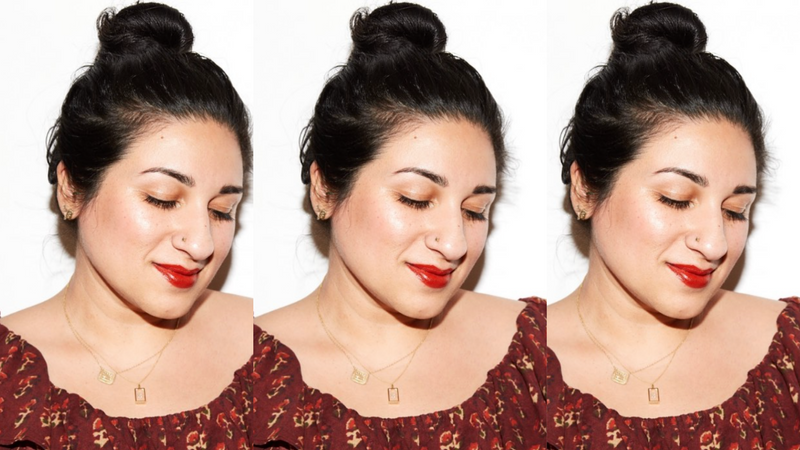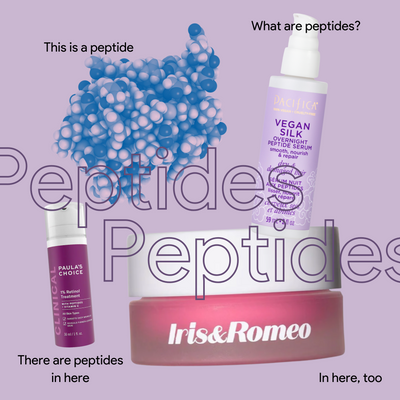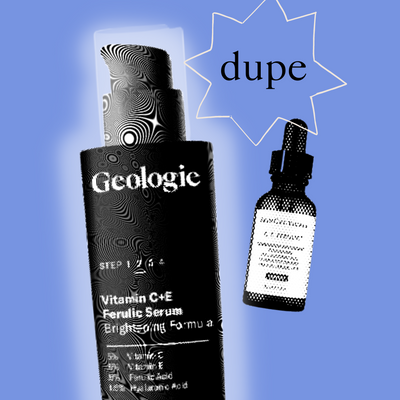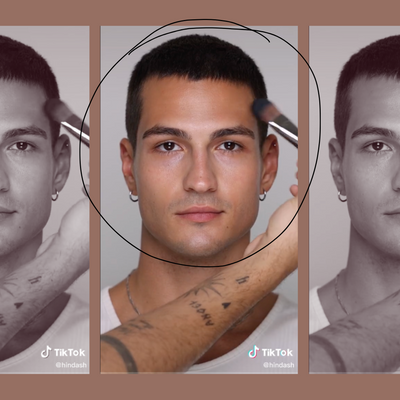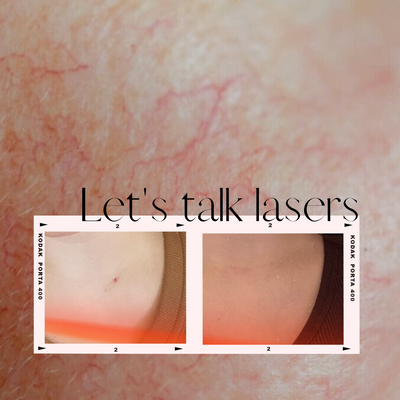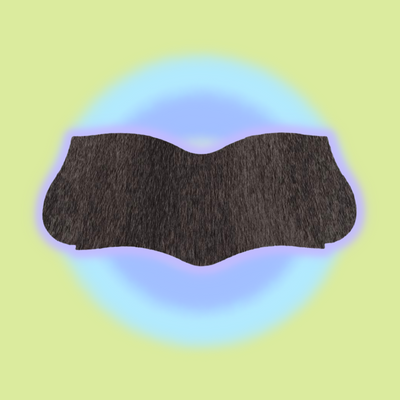Makeup artist Kirin Bhatty boasts celebrity clients including Tessa Thompson, Machine Gun Kelly, and Awkwafina—just to name a few.
“I don’t speak French. I can speak Urdu, but I can’t speak French,” Kirin jests when recalling her favorite Chanel eyeliner (more on that later) with “a very long French name.”
It brought me back to the time I was at a crossroads and came to Very Good Light‘s founder and Editor-in-Chief David Yi, conflicted on whether to take a course on French or Hindi/Urdu. I worried I needed to know a Western language like French (especially in the beauty industry), but to my surprise, he encouraged me to study Hindi/Urdu and embrace my South Asian identity instead.
And perhaps for South Asians, we don’t need to present an Anglicized or Westernized French-speaking version of ourselves to shine. We can come just as we are. As quickly as it passed, this single moment with her served as a metaphor for the space Kirin seeks to carve out for fellow South Asian creatives.
At 8 AM PST, Kirin FaceTimes me from her home in Los Angeles. I was in New York and in her L.A. kitchen simultaneously. She was ready for the day with coffee she had just brewed in hand. Early in the morning, the color of her voice is upbeat and sure of itself. We’re about to begin the interview when she stops me. She wants to get to know me first.
We get comfortable, speaking about our backgrounds, both in beauty and as South Asian-Americans, our favorite comforting spots in the New York area, as well as finding ethnic clothing for attending South Asian weddings, among other things. We get to know each other.
SEE ALSO: Machine Gun Kelly’s makeup artist walks us through how to get his MTV VMA’s pearl look
The challenge of pursuing the arts as a first-gen South Asian-American
Amy Liu, founder of Tower 28 Beauty, told me about her relationship with Kirin, which began when the pair worked together at Smashbox. Amy and Kirin collaborated on Tower 28’s upcoming SunnyDays SPF 30 Sunscreen Foundation to create a “thoughtful (and not overwhelming!) shade range that works on a wide range of skin tones.”
“Kirin put so much heart into every single one of the fourteen shades – and started development with the darkest shade,” says Amy. “I couldn’t think of a better collaborator for this product.”
But who was Kirin before she was applying makeup on celebrities and developing beauty products soon to be found in Sephora aisles?“Unfortunately, I kind of told my parents I would go to law school, but I had no intention of going to law school,” says Kirin.
Truthfully her heart was elsewhere — in the arts and entertainment. As a compromise, she interned at E! in their law department, but looks back at the experience as “miserable.”
“And so after that, I always found myself close but not in it. It’s almost like looking through a glass; seeing it but not being able to touch it,” says Kirin.
She got closer when she started working at LA’s local Angeleno Magazine. Kirin says working in sales again was “terrible” but felt inspired from her frequent trips to their editorial department to be a creative.
She recalls pursuing the arts as a first-gen South Asian-American as challenging. “When you’re a Desi (slang for South Asian) kid growing up, the arts are not presented to you as an option for your future,” says Kirin.
She attributes the expectations and pressures to follow safer career and life paths to being a commonly shared experience among children of immigrants. Sympathetic yet undeterred, Kirin is still prompted to raise the questions, “But what if you’re not good at the sciences or math or any of those things? What if you’re just not meant to fly in those things, then where do you go?”
That’s not to say she believes other pursuits are any less; she believes we should go where we’ll thrive. She advises, “You have to go somewhere where you can actually be just as good as the president who was the head of medicine at the hospital. I’m not the head of medicine at a hospital, but I’m really good at my job. And I feel like my caliber is just as high in my own field.”
Kirin finds the stigma ironic, pointing out the significant role creativity and the arts play in the Indian subcontinent and South Asian culture. “We come from such an artistic, rich culture. It’s in our blood to create. It’s in our bones,” she says, which leads her to scrutinize, “And we’re artists in our souls, so where are we?”
“It’s such a big part of our culture. And it’s such a big part of growing up South Asian,” she says, “It’s just not a big part of how we choose our careers. And I hope that changes.”
Her solution? “I think at a certain point you have to own your own happiness,” Kirin proclaims.
“I also see a lot of younger people who are coming up in our community valuing their happiness. And I think that’s really important. I think I know a lot of people in my own family and other families who didn’t put themselves first and perhaps are successful financially but not emotionally.”
Kirin’s first big break as a makeup artist
“For me, becoming a makeup artist required me to be really scrappy,” says Kirin.
Kirin’s makeup artistry career began before the age of Instagram. During a recession, she had lost her job and was “desperate not to move home” after having tasted independence. Kirin pursued every avenue she could, from nannying to copywriting for an underwear brand.
Through a friend, she met a photographer who worked at Smashbox Studios. Curious, she inquired about any openings, and he informed her of a masterclass Smashbox was hosting. The masterclass was to be led by the head of the brand, and additional assets included around $1,000 worth of makeup and professionally shot photos for a portfolio. At the time, Kirin was dabbling in makeup, so she says she was “crushed” she couldn’t afford to attend the masterclass.
Kirin was allowed to audit the masterclass for free, on the condition she couldn’t use the class’s Smashbox products. She ended up going to CVS and buying drugstore products and borrowing brushes from a friend who worked at MAC to create a makeshift makeup kit.
In preparation for the class, Kirin taught herself makeup by watching Smashbox lead Lori Taylor Davis’s how-to videos online. When she began the class and Lori was there in person, Kirin says she was “shaking.”
She remembers as a “scrappy” artist feeling intimidated by everyone else with their professional kits. She recalls, “I went to the restroom and took toilet paper home because I was really struggling.”
But then someone didn’t show up to the class, and Lori allowed her to take what was meant to be their supplies and station. With these, Kirin decided to take a risk and create an avant-garde makeup look. “And I was like, ‘I’m just gonna do it. I don’t know when I’ll get this chance again.”
The chance came again when a few weeks later after the class had finished. Kirin received an email from Lori Taylor Davis, asking her to be her makeup assistant for a day. “I didn’t know what being a makeup assistant meant at that time. I showed up on set in heels thinking I was there for an office assistant job.”
To her surprise, the gig was more active than she anticipated. “If you’ve ever been in a studio, they’re made of concrete. It’s super bad if you’re wearing heels all day.”
And she loved it. “I thought, ‘Gosh doing an eight-hour day in the office, I’ve never felt more exhausted and wanting to just not be there. But doing a 14-hour day on set on my feet, I want to do 21 days like this.”
That one day of assisting turned into six years, and Lori continues to be her mentor to this day.
“I got to learn beauty in a really precise way,” says Kirin. “I learned how to be fast. And I learned how to value all skin tones and textures because it’s really easy to do beautiful models who have no skin issues and are in their 20s or younger. But when you’re working with real people who have real skin concerns at all ages, it makes you really good as an artist.”
After working fashion shows and on advertisements, eventually, she landed in the world of celebrity makeup, which she calls “a natural progression.” She attributes it to her love for people and personal one-on-one connections.
The power of taking up space and affirmations
“In the beginning of my career, I did a lot of hiding,” Kirin recalls.
She refers to herself as an “immigrant kid” who didn’t want to be perceived as different, even when she started doing makeup on high-profile sets. “It wasn’t cool to be different at all.”
An “immigrant kid” response to feeling different, she observes, means “making yourself small.”
“I would try to be super agreeable all the time. If I heard something that was inappropriate, I would block it out or I would try to excuse the person who said it.”
According to Kirin, she shrinks herself no more. Instead, she takes up space. “To make yourself heard and be big,” she says.
“I would say recently in the last few years, things that I was too scared to say, I now say proudly,” And for her, part of speaking up proudly is also being proud of her roots, “I also really am so proud of what I come from and the journey that my parents took to get here.”
To get there, she had to overcome feelings of imposter syndrome, which she finds all too common among artists of color. “We tend to criticize ourselves and feel not good enough constantly.”
For her, to combat imposter syndrome is to combat fear. “You have to find that comfort within yourself to be who you are and you can’t be afraid.”
Kirin’s advice says fear can be unlearned, and we can train ourselves to do so. “And even if you are afraid, don’t show it, because you belong here,” she says.
This training is an affirmation, she states. “Tell yourself every day, ‘I belong here. I deserve this,’ and the more you tell yourself that you’ll believe that because it’s true.”
According to Kirin, this one affirmation is responsible for everyone’s success. “If you’re going to look at someone in a space who you look up to, or you’re seeing is really kind of commanding the space, it’s usually just because they believe in themselves and they’re confident.”
“And so I think part of the journey of setting yourself apart is really believing that you belong there, and you deserve just as much as everyone else is getting, if not more.”
She accredits fellow BIPOC in these creative spaces for inspiring her to fight for her place, but also cites a scarcity mentality as an issue among South Asians that’s prohibiting ourselves from moving forward, because to progress we have to progress together. “It’s much easier to command space when there’s a group of you,” she says.
To Kirin, part of taking up space for herself is making space for others, and letting go of a scarcity mindset that says there isn’t enough room for all South Asians to succeed.
“As artists of color, we have to advocate for each other,” she says. “We have to put each other forward.”
“Scarcity mentality doesn’t get anybody anywhere. It also doesn’t help you uplift others. And that is how we’re going to get anywhere in the space.”
“It’s hard not to believe a scarcity mentality when you only see a few spots open to people who look like you,” says Kirin. She suggests the solution is more than internal work and affirmations – it’s about bringing more diverse voices to the table and affecting change on a systemic level. “Things are slowly changing, but there’s definitely a lot of space and need for change.”
When Kirin moved into celebrity makeup artistry, she didn’t see herself or people who looked like her represented. “Oftentimes when it’s a really big high-budget movie, the only person of color is me,” she says.
Kirin says for there to be diversity and inclusive change, it has to extend beyond what audiences see, and be apparent behind the scenes as well.
“Here’s the thing,” she proposes. “It’s very easy to put a person of color as the model right, which is incredible. But if everyone on the creative team is not [a person of color] and there’s not one other voice, then what does that actually do?”
“It was my dream and is my dream to be a successful celebrity makeup artist in a very white space. And I hope that my presence there is challenging that and changing that.”
Cover Photo: Robin Black

